Os for advanced lung cancer OS for more than 5 years!Precision treatment is becoming a new hope for lung cancer treatment | Jinling Lung Cancer Network Forum
Author:Cancer Channel of the Medical Time:2022.08.08
*For medical professionals for reading reference

The immunotherapy era brought more treatment options to patients, and also expanded the path of exploration to clinical practice.
Lung cancer is the most common cancer in China. Its high incidence and mortality have put forward high requirements for lung cancer treatment. New diagnosis and classification methods, therapeutic drugs and methods are endless, providing a wealth of treatment options for the comprehensive management strategy of lung cancer.
Long -term survival, as an important goal of lung cancer management, has always been a problem that the MDT clinical research team of each lung cancer has been committed to overcome.
On July 26, 2022, he was chaired by Professor Song Yong team of Jinling Hospital affiliated to Nanjing University Medical College. Professor MDT team from Professor MDT team from the First Affiliated Hospital of China University of Science and Technology, Professor Zhou Xiangdong from the First Affiliated Hospital of the Army Military Medical University The MDT team and Professor Xiangzhi of the MDT team from Ruijin Hospital affiliated to Shanghai Jiaotong University each shared the cases of long -term survival or ideal efficacy under the comprehensive treatment of their respective management, which provided an important inspiration for the application of accurate treatment in lung cancer management.
This case shares from Professor MDT team, which is reported by Dr. Leng Zaijun's "a late NSCLC case with a survival of more than 5 years".
Basic Information
A 66 -year -old woman was admitted to the hospital in April 2016 for two months. There was no history of smoking. Physical examination is not special.
Imaging information:
Base line M0: There are multiple lesions of the right lung, the lobe of the right lung, accompanied by a small burr and shallow lobe. The lymph nodes on the right on the right, multiple nodules under the right pleural, and the nodules of the right base section are formed with empty cave.
Cortic and lung puncture biopsy+pathology: low -differentiated cancer, immunohistochemical markers conform to adenocarcinoma. Immunization group: CK7+, Napsin-A+, TTF-1+, CK5-, P63-, P40-, SYN-, CGA-, CD56-, Ki-67+about 10%. Gene test shows that EGFR-19 lacks positive mutations.
Diagnosis: right lung adenocarcinoma (T4N1M1A, IVA stage, EGFR-EX19DEL)
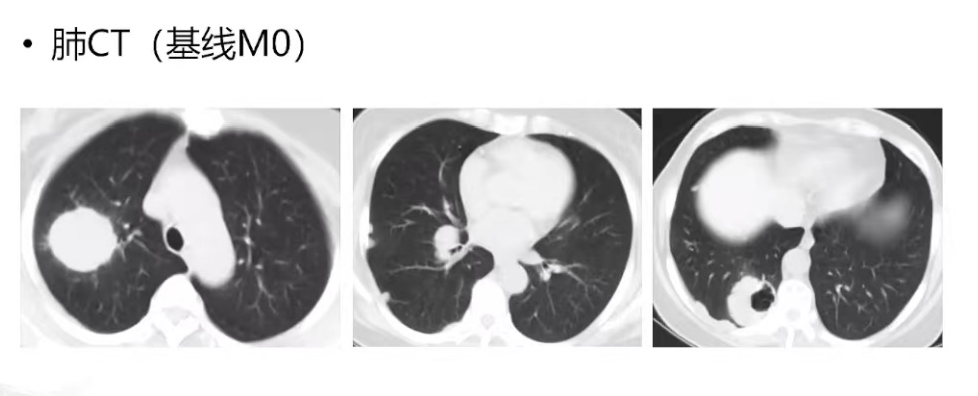
Treatment process: five progress, five solutions
IPASS research in 2009 is a milestone of lung cancer targeted therapy. This study proposes that for patients with positive EGFR mutations, compared with platinum dual pharmaceutical chemotherapy, using EGFR-TKI can achieve obvious survival benefits. ) Oblayed. The National Comprehensive Cancer Network (NCCN) Guide recommends that the use of EGFR-TKI for NSCLC patients with positive NSCLC can be used as a first-line treatment option.
Therefore, the patient accepts 0.25g QD in Geffitinib.
In the third month of the patient's use of Geffitinib, the lung CT found that the upper and lower lobe lesions were significantly reduced, the lymph nodes on the right pneumon were reduced, and the right pleural nodule disappeared.
However, in the seventh month, when the lung CT was reviewed, the patient's upper lung lobe and the base section lesion increased, and the new hair nodules appeared under the right pleural, and the primary progress appeared in the condition.
At this time, the patient used a generation of EGFR-TKI Gefitinib 7 months later.
In response to this situation, the NCCN guide in 2019 recommends that for the first or second-generation EGFR-TKI patients with drug-resistant T790M gene testing to detect positive patients, the three generations of EGFR-TKI Osidinib can be replaced.
The 2016 AURA3 Studies also pointed out that for a generation of EGFR-TKI patients with drug resistance, compared with platinum dual drug chemotherapy, oral Oshitinininy extended PFS stage (4.4 months and 10.1 months, respectively). The above studies are reminded that it is necessary to improve the genetic testing for the second biopsy.
In the seventh month, the patient improved the second biopsy and genetic testing. As a result, the EGFR-EX19DEL (+), T790M (+). Therefore, the doctor replaced the second-line treatment scheme Oshitininib 80mg QD for the patient.
In the 20th month, the lung CT showed the narrowing of the lesions of the right upper lung and the base section, and the lower nodule of the right side decreased, and the curative effect was evaluated as PR.
However, the patients subsequently developed symptoms of headache, dizziness, and vomiting, and improved the head MRI to show the brain metastases and movement. Osicinib brought a 13 -month PFS to patients.
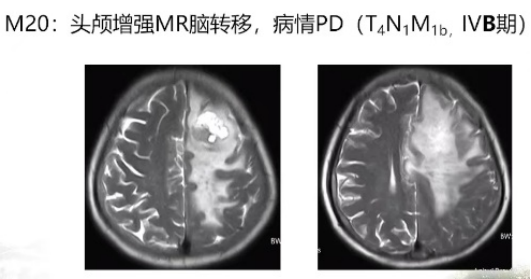
In the next step, according to the 2019 NCCN guidelines, for patients with Osdinini -resistant brain metastasis NSCLC, local treatment can be selected.
Therefore, on the basis of the original Oshitinib 80mg QD orally, the doctor gave patient head Tomo radiotherapy (95%PGTV 6000cgV/20F/40W). The head symptoms improved, and the head of the head MRI found that the brain metastases were reduced, and the cerebral edema faded.
At M24, the lung CT found that the primary lesion of the right lung leaf appeared again, and Oshitinib+Tomo achieved a 4 -month PFS for patients.
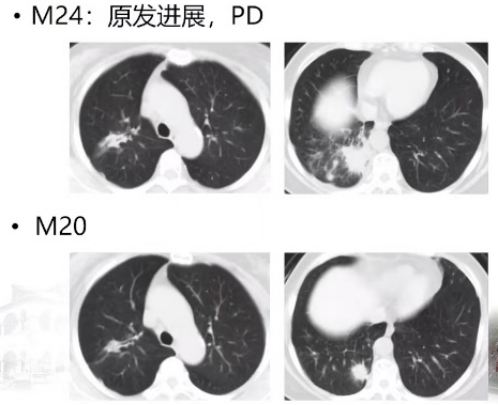
For the treatment of the three generations of EGFR-TKI resistance, the drug-resistant mechanism must be clearly defined, which can be divided into EGFR dependencies and non-EGFR dependencies. For EGFR dependencies, according to the results of the C797S and T790M gene detection, the first generation to three generations EGFR-TKI is selected. For non -EGFR dependencies, that is, the drug -resistant mechanism involves other bypass such as MET and HER2, which can be combined with other targeted therapy. If a small cell transformation (SCLC) occurs, you can choose the EP solution. Therefore, it is very important to clarify the drug resistance mechanism for the next step of chemotherapy. In the 24th month, the patient's third puncture biopsy+MNGS, the test results showed EGFR-19DEL, T790M (-).
According to the 2019 NCCN guide, patients with NSCLC progressing after systematic treatment can consider using immunochemical point inhibitors or systemic chemotherapy such as Dorcio, Gascotaba, etc. The positive of EGFR mutations as an anti -indicator of immunotherapy may lead to surpassing the disease.
Therefore, the doctor did not consider immune therapy for the time being, but replaced the three -line treatment plan for the patient: Pemeter 0.8g+Bevarzab 400mg Q21D × 4 cycle+Bevarzab 400mg × 1 cycle.
In the 24th month, the lung CT showed the stability of the upper lobe lesions, and the lesions of the right lower lobe were slightly reduced, and the curative effect was not ideal.
In the 29th month, the patient's lower right leaf base lesion increased, and the third primary progress appeared. At this time, the head MRI on the head of the head was acceptable. The use of three -line treatment plan has achieved 5 months PFS for patients.
For patients with resistance to tertiary treatment, doctors began to consider the possibility of applying immunotherapy.
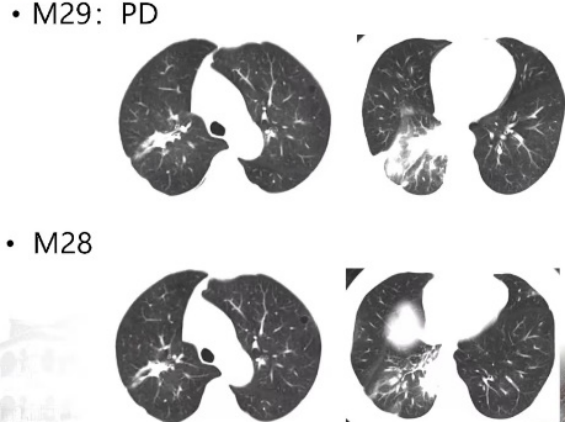
SITC recommends that after EGFR/ALK/ROS1 sensitive mutations, after the first-line TKI treatment of drug resistance, if the second-line is accompanied by PD-L1 ≥ 50%of high expression, the Paborzumab can be considered. In 2018, the NCCN guide also recommended NSCLC patients for PD-L1 testing, and divided the follow-up crowd into three categories: genetic mutation targeted therapy group, PD-L1 ≥ 50%immunotherapy group, targeted and immune, and immune did not benefit. Traditional chemotherapy treatment group. KEYNTE024 Studies show that patients with PD-L1 TPS ≥ 50%of NSCLC patients show survival benefits. The IMPOWER150 studies are the first III clinical trials that show the treatment of EGFR mutant -positive patients that can benefit from immune examination point inhibitors.
At M29, the patient received the fourth biopsy+gene test, and the results showed that PD-L1: 80%. Under the premise of eliminating immunotherapy taboos and obtaining full knowledge of consent, the doctor adjusted the four -line treatment plan for the patient: Paborizumab 200mg Q3W.
M30, M34, M36, M41, M44 evaluate the treatment effect, and the lung CT shows the reduction of the upper right and base lesions to achieve maintenance PR.
At the time of M48, the patient stayed in the neurology department in April 2020 due to "unexpected words, the right lower limb is weak", suspecting the progress of the brain metastases, and the improvement of the lung CT and the skull MRI. Multiple acute cerebral infarction, lung CT display maintenance PR. Neurology is hospitalized for symptomatic treatment of cerebral infarction, and continues to be treated with Paborzab.
M56 and M58 reviewed the lung CT, and the lower lung lesions increased again. The fourth primary progress was considered. Parbilitzab brought 31 months of PFS for patients.
Immunotherapy adverse reactions (IRAE):
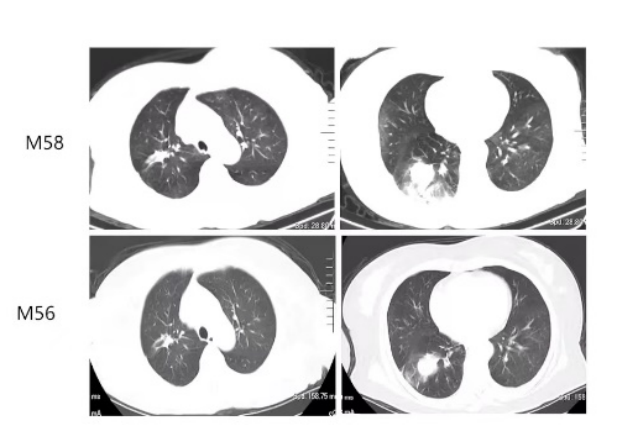
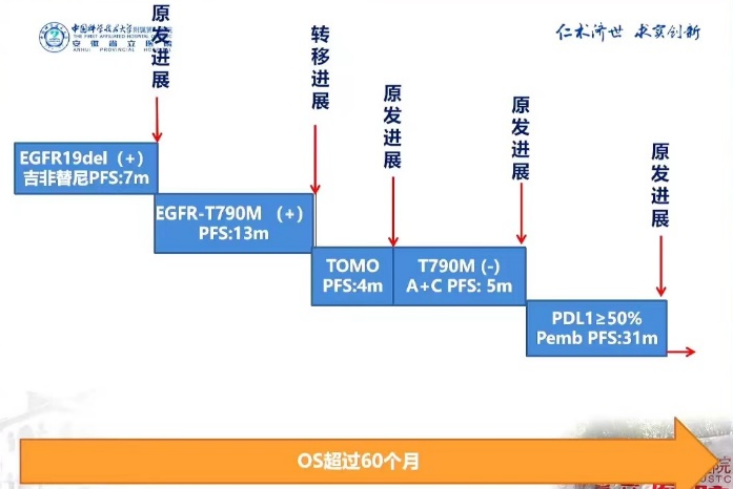
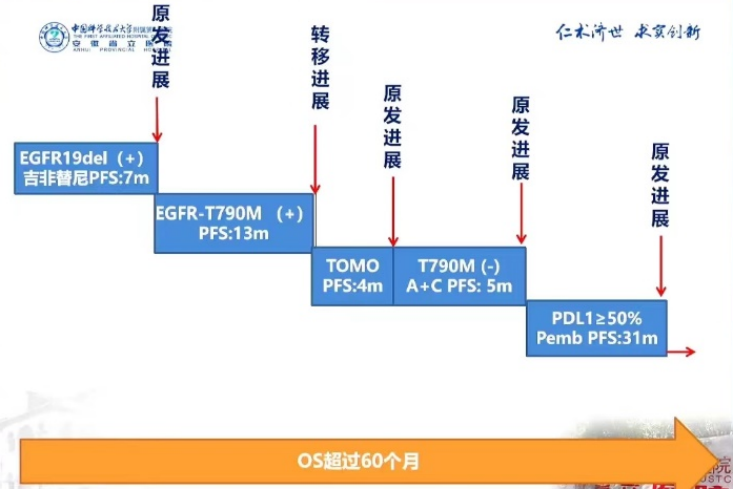
Substation of thyroid dysfunction+diabetes
In the process of using Paborizumab, patients have some adverse reactions that are dominated by endocrine systems, including hypothyroidism and diabetes, which are given lefthropineyxine tablets and insulin treatment.
As a common adverse response (40%and 0.2%to 0.9%) as a common immunotherapy, it is generally recommended to give symptomatic treatment for patients with hypothyroidism and diabetes without stopping immunotherapy.
Expert Reviews
Looking back at the complete treatment, the patient's total survival (OS) period exceeded 60 months, and the main PFS benefited from immunotherapy.
In response to this case, Dr. Leng Zaijun proposed that patients with sensitive mutations in EGFR are also potential beneficiaries of immunotherapy, but blood glucose and thyroid function must be detected during the medication. The cause of this patient can survive for a long time. In addition to standardizing treatment and full management, it also benefits from the trust and cooperation of doctors and patients.
Professor Qian Dong of the Department of Oncology and Radio Department of the First Affiliated Hospital of China University of Science and Technology commented on the case from the perspective of radiotherapy. He pointed out: "In the era of targeted therapy, timely treatment is given in time during the exhibition stage of the disease. Patients enter the system progress stage, give more treatment options, and bring more benefits to patients. "Professor Qian Dong raised a question at the same time, whether the local progress stage of the bottom of the right lung base can be considered as the local progress stage of the bottom section of the right lung base can be considered. Local radiotherapy is used to increase the benefits of immunotherapy. Although some studies have found that local low -dose radiotherapy can activate immune and enhance the effect of immunotherapy, it still needs to be supported by high -level evidence. The cooperation of the Department of Internal Medicine and radiotherapy to enhance the efficacy of immunotherapy will become one of the development directions of future tumor treatment. The question of whether the "TOMO treatment will cause or aggravate the cerebral infarction or whether there is a long -term impact" proposed by Professor Fuck Jiejie, Professor Qian Dong gave the following answers: "Long -term radiotherapy can cause blood vessels to be closed, and large dose of radiotherapy also also It can cause brain injury, and it is difficult to distinguish with brain infarction. Therefore, radiotherapy should further improve the accuracy of local positioning to avoid or reduce the occurrence of brain necrosis. "Professor Professor Jie Ran of the first hospital affiliated to the University of Science and Technology of China The patient's standardization and treatment effect fully affirmed it, and pointed out the good prospects of the internal chemotherapy+immunotherapy combined surgical treatment of patients with lung cancer, which is worth further exploration and breakthrough.
Professor Caolejie summarized this case: "First of all, it has achieved good results for the patient's sub -diagnosis and timely treatment plan adjustment. This prompts how to balance targeted therapy and immunotherapy for NSCLC patients. Explore. Second, we must summarize the lessons and lessons to prevent the occurrence of cerebral infarction in patients with tumor patients. "
Professor Zhou Xiangdong of the First Affiliated Hospital of the Army Military Medical University pointed out on this case: "The management of this case is very standardized, but during the maintenance of the treatment stage, when the lesion is not well controlled, a biopsy can be performed in early grasp of the condition of the disease. Multiple whole body assessment, including coagulation function to determine whether anticoagulant therapy is needed. "
Experts from Professor Song Yong, a team of Professor Song Yong, affiliated to Nanjing University Medical College, commented on this case from multiple angles. Professor Shen Qin pointed out: "In the process of diagnosis and treatment of the whole process, the patient was well applied to the pathological diagnosis. In the first pathological diagnosis, low -differentiated adenocarcinoma was a high -risk factor for coexistence of a variety of gene mutations. In view of the technical restrictions at the time, the technical restrictions at that time The detection of failure to perform panoramic gene mutations may be one of the reasons why the patient developed in 7 months. "Professor Zhu Xixu, Department of Radiology, pointed out:" First of all, after the patient receives head radiotherapy, the head metastases has not progressed for a long time. It shows that patients are sensitive to radiotherapy. Secondly, the recurrence of patients is mostly recurrence of the lungs in situ, and less involved in other parts. Therefore, when targeted therapy or immunotherapy repeatedly relapses, the use of local radiotherapy in the lungs can be considered to enhance the enhancement of the lungs to enhance the enhancement treatment effect."
Long press the QR code below the poster
- END -
The first press conference of the first press conference of the new crown pneumonia epidemic in Tibet Autonomous Region in 2022 was held
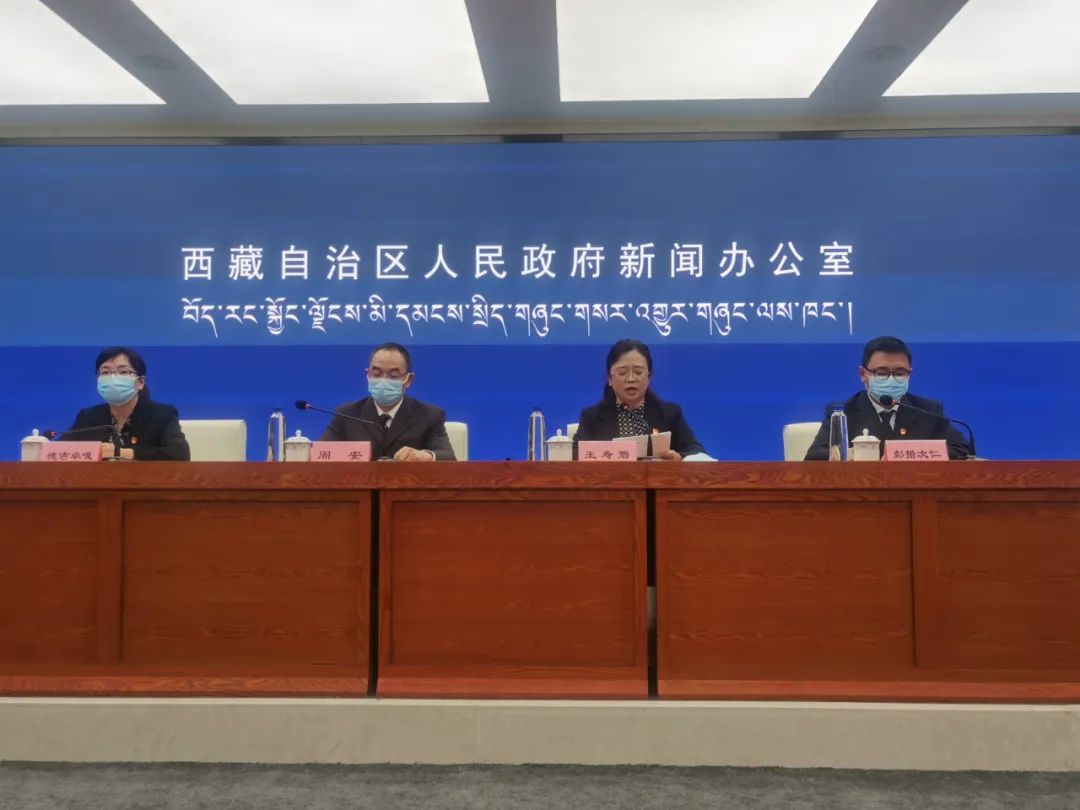
On the morning of the 9th, the Press and Release Center of the News Office of the ...
High -falling injuries and life -threatening life Two surgery turns dangerous to peace
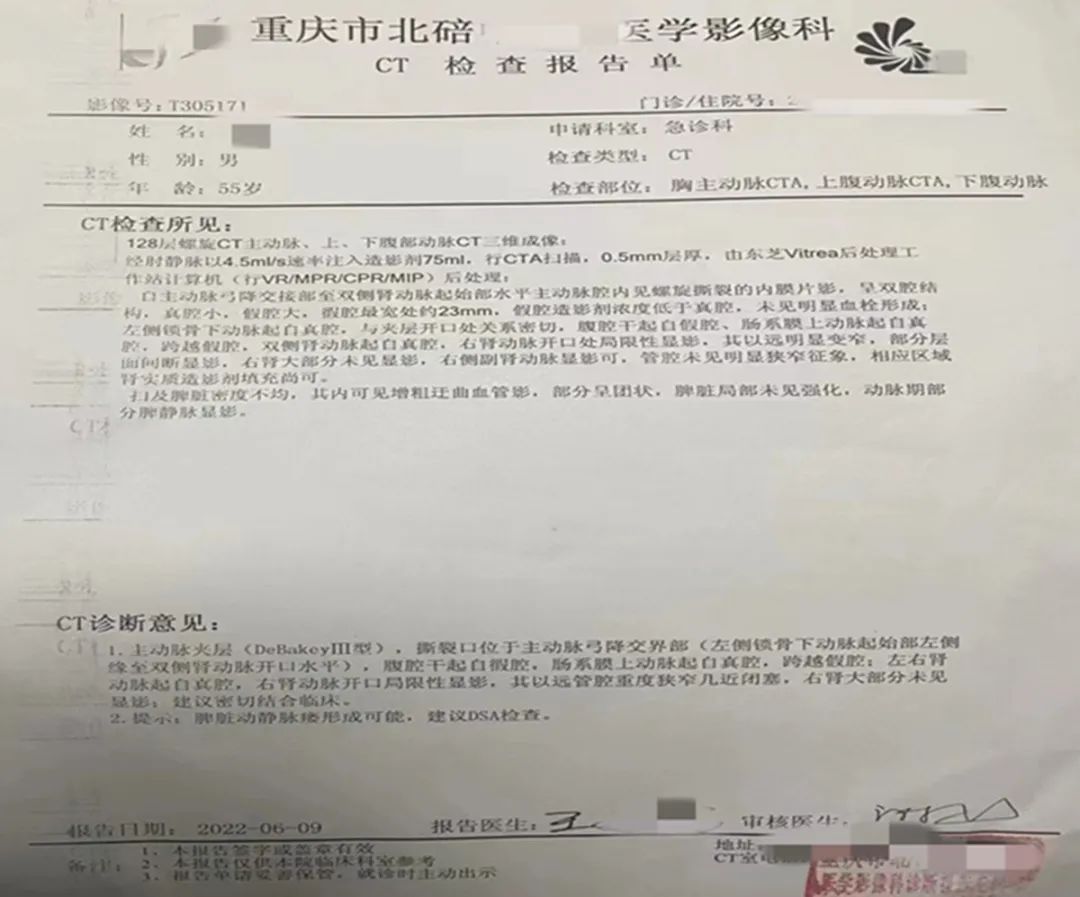
Uncle Wang, 5 -year -old, accidentally fell from 4 meters high when dismantling th...